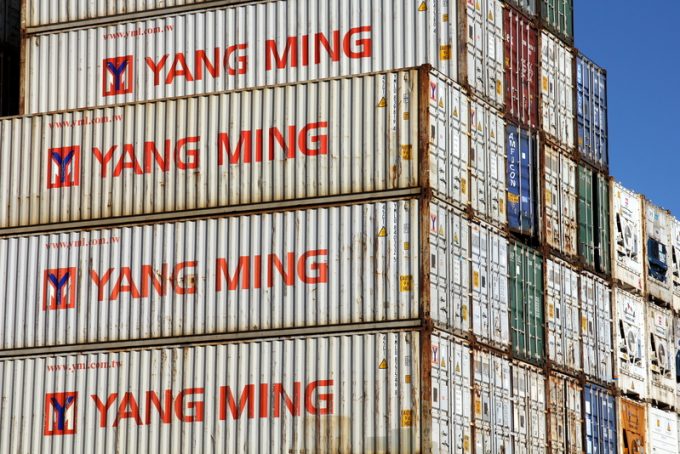Capacity squeeze will ease as more newbuilds arrive, says Xeneta
Additional tonnage being introduced to the ocean shipping market next year presents “an opportunity for ...
GM: RAISING THE ROOF GGM: IN FULL THROTTLE GZIM: MAERSK BOOST KNIN: READ-ACROSSMAERSK: NOT ENOUGHMAERSK: GUIDANCE UPGRADEZIM: ROLLERCOASTERCAT: HEAVY DUTYMAERSK: CATCHING UP PG: DESTOCKING PATTERNSPG: HEALTH CHECKWTC: THE FALLGXO: DEFENSIVE FWRD: RALLYING ON TAKEOVER TALKODFL: STEADY YIELDVW: NEW MODEL NEEDEDWTC: TAKING PROFIT
GM: RAISING THE ROOF GGM: IN FULL THROTTLE GZIM: MAERSK BOOST KNIN: READ-ACROSSMAERSK: NOT ENOUGHMAERSK: GUIDANCE UPGRADEZIM: ROLLERCOASTERCAT: HEAVY DUTYMAERSK: CATCHING UP PG: DESTOCKING PATTERNSPG: HEALTH CHECKWTC: THE FALLGXO: DEFENSIVE FWRD: RALLYING ON TAKEOVER TALKODFL: STEADY YIELDVW: NEW MODEL NEEDEDWTC: TAKING PROFIT

Taiwanese ocean carrier Yang Ming has signed long-term charter agreements for five 11,000teu and five 12,000teu newbuild ships for delivery between 2020 and 2021.
The carrier said the new eco-friendly ships were part of its “ongoing fleet renewal programme”, replacing older vessels with higher fuel consumption.
It currently operates a fleet of 103 containerships, with a capacity of 632,000teu. It charters 63 vessels and is ranked seventh in the carrier league table.
Yang Ming will lease the 11,000teu vessels from Japanese shipowner Shoei Kisen Kaisha and the 12,000teu ships from Greek lessor Costamare, but did not stipulate the length of the charters or which trades they are likely to be deployed on.
However, the shipowners would be unlikely to be able fund the newbuilds unless there was the assurance of a lengthy charter period, at least 10 years, and that the daily hire rate was fixed for the duration of the lease.
With an eye on the IMO’s January 2020 0.5% sulphur cap regulations, Yang Ming said the vessels would “emit less carbon and use fuel oil containing limited sulphur”.
This suggests that, unlike its compatriot Evergreen and other carriers such as MSC and HMM, the newbuilds will not be fitted with exhaust gas cleaning systems, known as scrubbers, to allow burning less expensive heavy fuel oil (HFO).
Assuming a likely premium of around $200 per tonne for low-sulphur fuel (LSFO), Yang Ming will face a cost disadvantage compared with some competitors having scrubber technology installed on newbuilds and thus will still be able to bunker their ships with HFO after 1 January 2020.
Yang Ming said the design of the newbuilds would have a “twin-island” concept, designed to increase container capacity by sliding the upper three decks of the accommodation unit, creating space for more slots.
The “Skybench” concept was developed in 2014 by South Korean shipbuilder Hyundai Heavy Industries and has been installed on a number of 14,000teu and 19,000teu vessels, extending container-carrying capacity by some 350teu and 450teu, respectively, originally to mitigate the loss of slots for gas tanks if the industry moved towards using LNG fuel.
So far, among the major liners, only CMA CGM has stipulated the use of LNG for its newbuilds, others either opting for scrubbers or being prepared to bunker them with LSFO.
Comment on this article